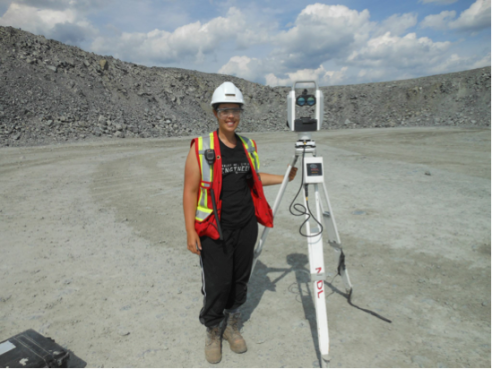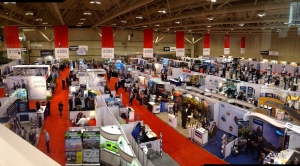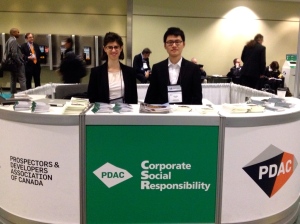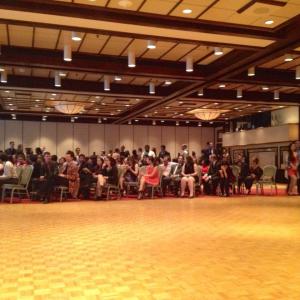Betty Ann Heggie has spent twenty-six years at the Potash Corporation of Saskatchewan Inc where she climbed the corporate ladder to become Senior Vice President and an officer in the company. She was named Canada’s Top Investor Relations Officer by both her clients and her peers.
Betty Ann is now using her retirement years to promote Women’s mentorship, answering the call to share her lessons learned with other women. She has spearheaded The Betty Ann Heggie Womentorship Foundation, which supports organizations and individuals that reflect and promote her teachings about the importance of Gender Physics and the necessity of women supporting women.
Betty Ann was nominated as the 2015 Women in Mining (WIM) Canada Trailblazer award winner. This award, established by WIM Canada in 2013 recognizes women who are risk taker and have helped other woman advance in their careers.

Betty Ann Heggie
1. What originally appealed to you about working in mining?
I am from Saskatchewan and I was looking for work around the province. I knew I wanted to have a family and at the time my prospective husband had a small business in the area. Most of the jobs started at an office in the province and when you got promoted, you were transferred to another city. Thus, I looked for employment at a head office in Sask, where I wouldn’t have to move. Since mining is a big part of our economy, Potash was at the top of the list; it presented great opportunities in Saskatchewan. I worked for Potash for 26 years from 1981 to 2007.
2. You are a woman in mining; what has the experience been like for you?
Back in 1993 we tried to buy the German potash company K+S. Our CEO and myself both went to Germany to meet with the company. We had a nice dinner and the following day they had planned a tour of the underground mine for the CEO, and a city tour for myself. The reason behind this is that was believed it to be bad luck for a woman to go underground. It was an old superstition and the company didn’t want to frighten the miners. So there I was, an officer of PotashCorp, and they wanted to take me on a city tour. Our open-minded CEO refused to go underground without me. In the end, neither of us went underground. The industry has changed since then; a lot of women are now working underground and much progress has been made.
I have always been impressed with the mining industry’s emphasis on safety and continue to be impressed with their contentiousness. This safety culture goes beyond the mine site; even it the office, things like standing up on a chair or laying a pair of scissors on the floor aren’t allowed because they are things you would not do onsite. So many great safety practices started at the mine and are now practiced at the head office. These good practices flow over into my every day home life.
3. How did you advance your career to a senior position?
Hard work is a given, but you have to be lucky and have a vision. In my case, I focused on ways to improve the company. That meant that I was continually pushing news ideas forward. Early during my career I had to be persuasive because I had no status and couldn’t dictate. I did a lot of networking and made connections within the company. That is how I influenced change.
You should make sure to be strong enough to present yours ideas convincingly, build a good network of people and most importantly be resilient; when things don’t work out, you can’t crawl up at home, you need to keep going.
4. Were your challenges different than the challenges that men face?
Yes, just this morning I was talking to a woman I mentor and she was explaining that very often her interests and those of the men she works with don’t line up, which makes it difficult to create relationships through socializing. At her workplace, the men all like snowboarding, ice fishing. Because her interests are different it doesn’t give much opportunity to bond.
In my case, I tried to make friends with the wives of the other executives; it gave me an opportunity to socialize with them as couples. But I did specifically take up golf to play in company tournaments!
5. When did you join Women In Mining (WIM)? Why did you feel compelled?
WIM is a relatively new organization that took off after I retired so my involvement has been mentoring some of the women in the organization and speaking at their events. I think it’s fantastic organization; at one of the events where I spoke I was impressed to see an entire ballroom filled with woman who share common interests. It definitely empowers women by bringing them together as they strive to be leaders.
6. Why is it important to have more women in the industry?
From my experience, women deal with risk very differently than men. Men will take the financial bet while woman are more considerate of the stakeholders and the people involved. Women will make sure to not deviate from the ethical path and are committed to respect the commitments made to the employees and the environment. Women provide balance to prevent having success at any cost. They make sure that all the ‘I’s’ get dotted and ‘T’s’ get crossed. They are likely to force more internal discussion before going external, which gives any project a greater chance for success.
7. The issue of including women in mining companies has been discussed for more than a decade. Why has it been such a challenge?
For one thing women haven’t traditionally chosen engineering for a career. Also, whenever you bring in diversity, you have to make allowances and initially the mining industry wasn’t good at making those changes. It has gotten better however! For example, we now have coveralls and toilets specifically designed for women. We can’t expect them to come in and be just like men. They are different and therein lies their value.
There is also a psychological reasoning behind this: people are more likely to hire those that are like them to fill the position that they had. In mining, men were more comfortable giving jobs to other men. Once you break the glass ceiling and create a context for women to fill those positions everything changes. When people haven’t seen a woman working in a mine, they don’t know what to expect and that unknown makes them uncomfortable. Most of our decisions are made from the 85% of our brain that operates beneath the surface in the subconscious. Going back to my experience in Germany, it was an unconscious bias; people didn’t know what to expect but now that women have gone and worked underground, mentalities have changed.
8. Have you had mentors that have helped you? And how important are they?
Yes and I was very lucky. There were no women higher than me at PotashCorp so I turned to men that had a wives or daughters trying to make it in business. I knew they would be sensitized to my situation and empathize. Mentors were very important to me; my decision-making and success was a result of very good advice from my mentors.
9. What are some of the lessons you got out of your career path?
I would say that it is really important to switch between one’s feminine energy and masculine energy. It’s important to maintain one’s natural compassionate feminine energy, which readily builds relationships but also use masculine energy, which is not afraid to take a risk. You can’t just be a leader and get your ideas across without also forming relationships and helping others. You need the attributes of both and I use both these energies with my work relationships as well as my personal relationships.
10. Any advice you would give a young female student considering a career in mining?
I would say to develop and maintain your sense of humour. It is important to have fun at work, to laugh at yourself. Through humour you can find common grounds with people, or break the ice with colleagues. Like the famous saying goes, time spent laughing is time spent with the Gods. It really increases your positive vibes!













